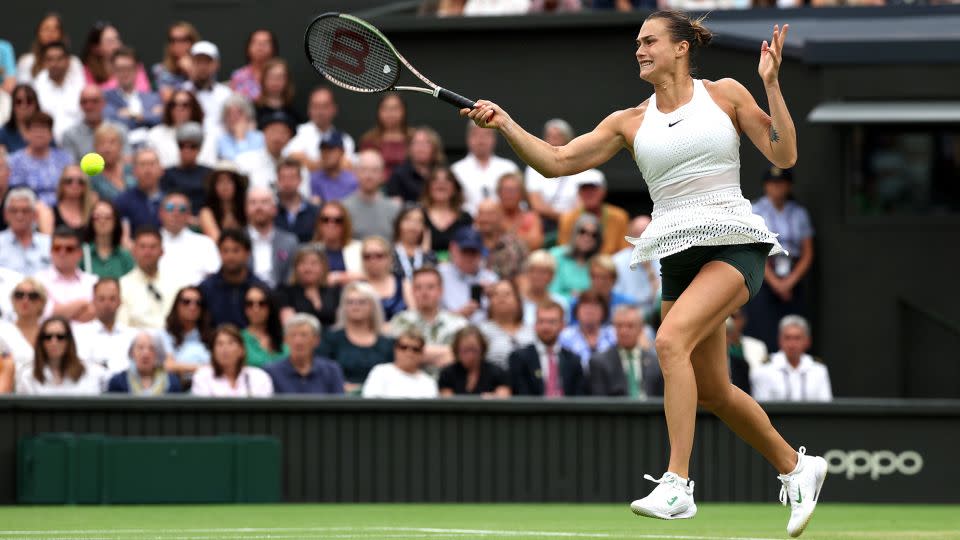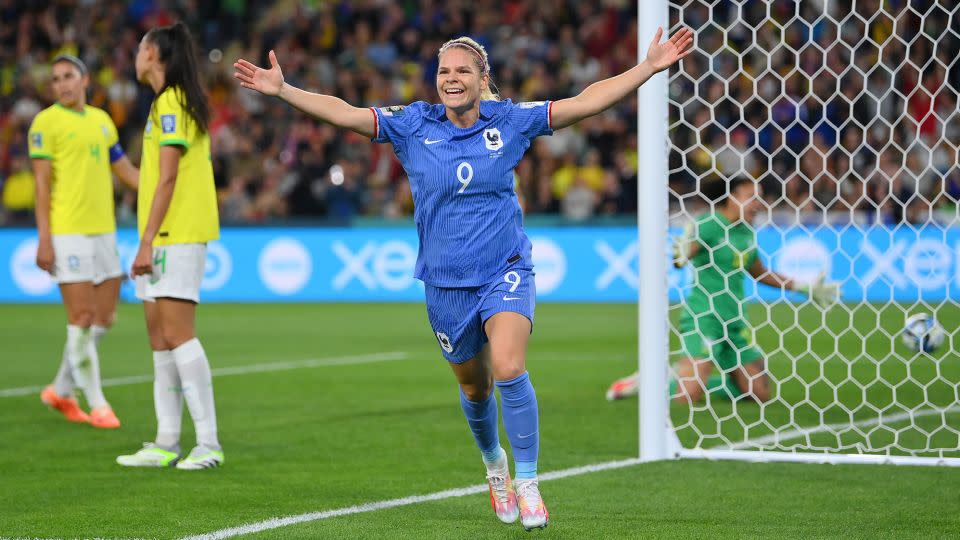Women’s soccer teams ditched white shorts at the World Cup. Here’s why that matters
When England take the field at Sunday’s Women’s World Cup final, the team won’t look the same as the one that won the European championship last July. The difference? No white shorts.
They are not alone. While some teams still donned light shorts at this year’s tournament, including Zambia and the Philippines, many joined England in adopting alternative colors. The number of nations whose uniforms feature white shorts decreased from 2019’s tournament, despite the number of participants expanding from 24 to 32. Notably, most of the teams that opted for white last time around switched color for 2023, including Canada, France, Nigeria and South Korea.
The move is part of a growing trend — and one not limited to soccer — aimed at tackling period anxiety among female athletes.
It comes after Ireland’s women’s rugby team swapped its white shorts for navy ones earlier this year and Wimbledon organizers relaxed their rules, allowing female competitors to wear dark-colored shorts under their all-white outfits for the first time. After England unveiled its new kits for the World Cup, forward Lauren Hemp told reporters the decision to switch from white shorts to blue was “a massive step in the right direction.”
“We can now feel comfortable when sometimes we might not have been if it was your time of the month,” she added. “It’s great to move away from the white shorts, not having that worry and focusing on the game.” Hemp plays in the English Women’s Super League for Manchester City, which in 2022 changed its uniform to exclude white shorts, in favor of burgundy ones, following feedback from players. (Manchester City’s men continue to wear the team’s traditional blue and white.)

The shift away from white shorts for women has been triggered by the rising popularity of certain sports, according to Nicole Melton, an associate professor of sport management at the University of Massachusetts Amherst. With over a million tickets sold, this year’s World Cup is the most attended standalone women’s sporting event in history, organizer FIFA said.
“The global attention that women’s soccer has received over the past 25 years, not only in the United States, but in Europe and South America, (means) there’s just more attention on it and more interest in it,” she said in a phone interview. “And so, it’s just given those women more of a platform to speak out on these issues.”
Allison Smith, an assistant professor of sport leadership and administration at the University of Massachusetts Boston, meanwhile said in a phone interview that getting rid of white shorts “is a really small thing that shows the big impact that women’s sports is starting to have.”
“Players feel like they have a voice to really challenge traditional norms that have always been in place for their particular sport, whether that’s uniforms, training or whatever it might be,” Smith added.
“You see players having the confidence to really speak up and say, ‘Hey, these aren’t acceptable practices for us anymore — we’re not just going to wear these particular uniforms or just take this particular pay or these crumbs that we’ve been given historically.’”
Women ‘should not be ashamed’
Hemp is by no means the only athlete to express support for a move away from white shorts at this year’s World Cup. New Zealand’s Hannah Wilkinson, whose team opted for black and teal shorts at this year’s competition, said in a statement that “the absence of white shorts now is fantastic for women with any kind of period anxiety.”
“It’s always been something that women athletes, not just footballers, have had to deal with,” she added. “In the end it just helps us focus more on performance and shows a recognition and appreciation of women’s health.”
Sports outfitters have traditionally taken their cues from men’s uniforms when crafting women’s ones, as most big clubs established their female teams long after their male counterparts. Melton noted that the historical prevalence of white shorts in women’s sports suggests that little to no consideration was given to how women’s bodies differ from men’s.
“Women just haven’t been considered,” she said, adding that changes in uniform policies and design will make female athletes feel more comfortable and confident. “Research that shows when you feel that way, you’re going to perform better.”
Melton hopes this movement will help make menstruation less of a taboo topic — not just in elite sport but in society at large.
“Boys have never been ashamed to wear a cup. A girl should not be ashamed to wear darker shorts when she’s on her period, but unfortunately society has made women feel ashamed of things that are just part of who they are,” Melton said. “It is a pretty revolutionary act for these athletes to say, ‘Yeah this is what we should be doing.’”

Clare Hanlon, a professor at Victoria University’s Institute of Health and Sport, believes changing norms around women’s uniforms can “make a difference as to participation.” Out of the 44 Australian women and girls she surveyed, 48% said changes in uniform polices, such as swapping white colored shorts for other colors, had encouraged them to stay in their sport.
Hanlon acknowledged that her sample size was small but explained, “We just needed something quick to say, ‘Well, is it worthwhile changing?’ Because you really won’t know the impact for a couple of years. So, we wanted to know, based on changes that have been made, ‘What do you think? Will this help you?’”
“It’s showing that it makes a difference. That might be not wearing white shorts, it might be, importantly, having a choice about what you might want to wear to make you feel comfortable,” Hanlon added.
According to Smith, one reason many young girls and teenagers drop out of sports is because their bodies change as they hit puberty.
“I would imagine that if I’m a young girl having a period for the first time and I’m wearing white shorts, it’s only going to create more anxiety for me,” Smith said.
Smith believes that changes to uniform policies will have a positive impact on future generations of women’s athletes.
“I’m excited to see women doing this at the top of the game, knowing this will have a trickle-down effect for girls in college, girls in younger leagues,” she said. “Young girls are also hopefully going to have uniform changes that reflect that, so that young girls stay in the game longer.”
Challenges remain
Moving away from white shorts may be the first of many design changes to be implemented in women’s sports.
While some headway has been made to tailor the fit and color of women’s soccer uniforms, in part to address differences between male and female athletes, other issues remain. For example, women’s soccer players still largely wear cleats, which were designed inherently for men, despite research suggesting that the shoes’ calibration may be contributing to anterior cruciate ligament (ACL) injuries in women.

Ahead of the Women’s World Cup, Nike unveiled newly designed soccer cleats, created specifically for women, that incorporate changes Melton believes will reduce the risk of certain injuries.
“Nike looked into that, and (said), ‘Oh, we can change the way our cleats are.’ And that reduces injuries,” Melton said. “Finally, people have opened their eyes because women athletes have been such amazing champions of these causes.”
“I think we are at kind of the time in history where you’re going to see more investment,” she added. “And that’s just going to have such a ripple effect in women’s sports.”
For more CNN news and newsletters create an account at CNN.com
